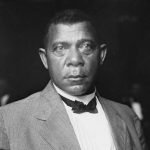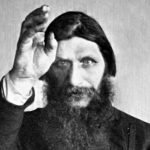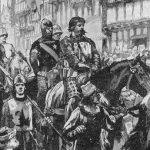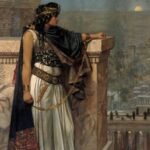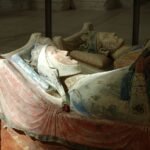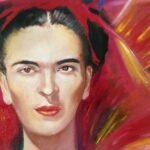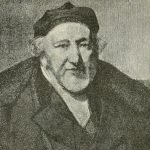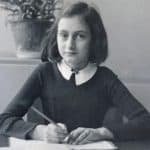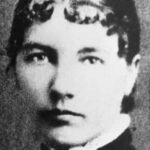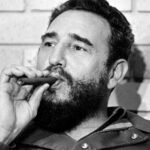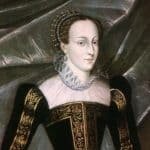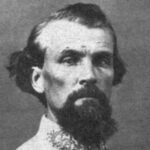Of all the literary greats who have existed in the world, perhaps there was none other more rugged, manly and adventurous as that of Ernest Hemingway. The man was a literary giant, writing many classic books but at the same time, was a connoisseur of adventure travelling far and wide, going on many exotic hunts and engaging in life with a manly vim and vigor. Today we’re going to be looking at Ernest’s life and his exploits that go beyond the written word.
Ernest began his life in 1899, born on July 21st in Chicago. Born to an affluent family, he lived his early years with a mother and father who taught him much about his life. His mother was somewhat of a forceful woman and pressed him to take cello lessons, causing him to feel a great deal of frustration and ire towards her over the lessons. His relationship with his father was far more stable as the man taught Ernest how to hunt, fish and live off the land. This what would go on to form the personality that Ernest would have for the rest of his life, as a man who enjoyed the outdoors and adventure greatly.
Recommended Reading
Diverse Threads in the History of the United States: The Life of Booker T. Washington
Who was Grigori Rasputin? The Story of the Mad Monk Who Dodged Death
FREEDOM! The Real Life and Death of Sir William Wallace
The call to adventure was strong to Ernest and after working as a journalist for a few years, he answered the call to serve in World War I as an ambulance driver for the Red Cross. Such a decision was commonplace at the time, as there were many young men who sought to serve their country in some way. He served on the front lines in Italy, bravely transporting the wounded across the battlefield and making sure to deliver goods to the soldiers who were often in great need of morale boosts. As he served, he was injured greatly by some mortar fire, damaging both of his legs severely. He would go on to spend a few months at a hospital before being released to go back home. His efforts were rewarded with the Italian Silver Medal of Bravery, but Ernest would never be the same after the injuries.
He found himself at home dealing with anxiety and frustration. He had been injured to the point where he came to realized his own mortality. He had only been a boy, 18 at the time, and thought prior to the incident that he was invincible. He then realized the unfortunate truth about his own life and spent a great deal of time in solitude reflecting upon the nature of his condition.
In the time of his recovery, he had fallen in love with a nurse for the Red Cross, but she had scorned him by leaving him for another man, creating a deep-seated bitterness in his heart. He continued writing during his time of recovery, going eventually to work for the Toronto Star Weekly as a freelance writer for them. His work wasn’t anything particularly inspiring back then, but he did pay the bills with it. Over time, he found himself returning to Chicago where he would go on to meet a woman whom he fell deeply in love with. Her name was Hadley Richardson and she was everything that he felt that he had wanted in a woman. Perhaps one of the greatest problems in Ernest’s love life was the fact that he often was worried about being abandoned, as colored by his first real relationship with the nurse from the Red Cross. He would go on to have four marriages total, leaving his wives before they had a chance to leave him each time. He quickly married Hadley and took a job working as a foreign correspondent in Paris, allowing them to move to the fashionable European country and spend their days together in wedded bliss.
It was here in Paris where he made one of his better friendships with the writer James Joyce. Together, they were a fun pair, visiting the bar scenes of Paris and engaging in quite a large degree of drinking. As the stories go, Joyce would often end up getting into some kind of altercation with someone and then Joyce would hide behind Ernest for protection. Ernest, being somewhat of a boxing enthusiast, would happily protect his companion from the danger.
Indeed, Paris was a time for real artists to connect to one another and for Hemingway it was no different. He met with dozens of affluent and skillful artists, writers and poets of the time. He wasn’t particularly a man who minced words and many a time he would run afoul of more than a few literary figures, but he was a man who lived larger than life in his time in Paris. Of all the people that he made connections with, Gertrude Stein was one of the more impactful. Gertrude was a well-regarded writer at the time and she was someone who was able to help Hemingway advance his career by mentoring him. She was able to assist him in getting his work distributed and picked up by the publishers, but at the same time, there was some tension between them, perhaps over Stein’s sexuality. Eventually he would pull away from her and begin to quarrel with her this would span over several decades.
Ernest grew bored with the life of a journalist, however. Writing articles, news and pieces about the comings and goings of the world around him didn’t have the same level of pizzazz and excitement that he had come to desire. His relationship with F. Scott Fitzgerald also created a desire to write more than just journalistic articles. He soon decided that he wanted to write a novel and began to work on what is considered to be the best Hemingway book ever written, The Sun Also Rises.
As he wrote the book, he started an affair with a young woman by the name of Pauline Pfeiffer, which would eventually go one to erode his marriage with his wife, causing her to leave him. Hemingway shortly married Pauline afterwards. With the Sun Also Rises growing prominent, Hemingway’s name began to take on a seriousness about it within the literary world. His next major work, A Farewell to Arms solidified his name as being one of the great American authors. His style was different from a lot of the other writers, who often wrote in long prose. He wrote short sentences, spoke with a plainness and focused intensely on the emotions and experiences that the characters were feeling. The man had no desire to create long, elegant sentences that achieved nothing. One of his philosophies in writing was to simply display truth without a need for waxing on and on without saying anything of value. This simplicity crafted sharp, smart pieces of art that most people could read without having their eyes glaze over.
Of course, such a style had its criticisms. There were many a writer who believed that Hemingway was overrated, that his rugged lifestyle was what contributed to his success and not his literary skill. Still, his works were growing more successful and with that success, his lifestyle grew more rugged. He began to study bullfighting up close and personally, going as far as to write a complete book about the subject. He travelled to Key West, where he would spend some time fishing for marlins and would even go as far as East Africa on safari, hunting in the Serengeti. His life of adventure went as far as to when he lived in Spain during 1937, reporting on the Spanish Civil War.
He spent some time living in Cuba as well, but as World War 2 began to come on the horizon, he knew that it was his duty to help serve his country. Hemingway’s idea to serve his nation faithfully was to outfit his fishing boat, the Pilar, into a Nazi Submarine hunting vessel. The Nazi’s at the time were sinking many boats, including civilian crafts. The Nazi submarines would often rise up when they saw an unarmed ship and would board it forcibly. Hemingway disguised his ship to look like an ordinary vessel, but outfitted it with heavy weaponry and enlisted a crew of his faithful friends to patrol the waters for weeks at a time, searching to lure out Nazi submarines. They were never particularly successful in this endeavor, but the sheer bravery and stupidity of his mission was a trademark of Hemingway’s outlook on life: all adventure, no hesitation.
Perhaps one of the more interesting stories about Ernest was his time reporting on the Second World War. The man was there at Omaha beach during the Landing at Normandy, watching the chaos and danger as one of the greatest military operations ever commenced. He was unable to move onto the beaches, however, because of his head injury, an injury that had been sustained due to a car accident due to his predilection for alcohol and driving in the dark streets of London. But still, he watched and recorded the battle from the safety of a vessel out to sea. From there, he was attached to several military regiments, one of which moved to liberate Paris. Hemingway’s penchant for writing and understanding of war allowed him to be an integral part of recording stories during the second world war, even earning him a bronze star for his willingness to enter into serious warzones as a journalist and record the information accurately, despite the fact that there was tremendous risk to his own life.
Latest Biographies
Queen Zenobia: The Charismatic Empress of Ancient Syria
Eleanor of Aquitaine: A Beautiful and Powerful Queen of France and England
Frida Kahlo Accident: How a Single Day Changed an Entire Life
Ernest’s life was definitely a mixture of adventure, alcohol and writing. But one thing that plagued him greatly, despite his tremendous success in writing world famous books like For Whom the Bell Tolls and stories such as The Old Man and the Sea, was his depression. As his life continued to experience various ups and downs, having several marriages crumble due to his inability to control himself and his desire to find someone better in life, incurring a great many injuries during his adventures and experiencing the loss of his best friends over the years. As his life continued, many a writer and friend died, leaving him feeling lonelier and sadder with each passing.
His greatest achievement was receiving the Nobel prize for literature in 1954, having finally reached one of the greatest accomplishments ever made in the literary world. With such a prestigious prize, Hemingway was grateful and gracious in his acceptance of it. Eventually, he landed in Idaho, having left Cuba as he had grown tired of living on the island that seemed to have too much attention from tourists and travelers. This had been before the Embargo and was around the time that Castro had come into office, although he had no problem with the new leader of the country.
Hemingway’s mental health was deteriorating along with his physical health as well. He had begun to grow paranoid near the end of his life and was beginning to experience delusions, worrying that the FBI was watching him. It had gotten so bad that he was unable to leave his home for fear of being watched. His wife, Mary Hemingway, decided that she would check him into the Mayo Clinic, where he began to undergo shock therapy designed to assist him with the depression and delusion. The shock therapy didn’t do him any good and with the combination of medications that he had been taking, his depression grew even worse.
Explore More Biographies
Sir Moses Montefiore: The Forgotten Legend of the 19th Century
Echoes: How Anne Frank’s Story Reached the World
Laura Ingalls Wilder: Life, Family Story, Works, and more!
Fidel Castro: Life, Work, and Death of an Intriguing Cuban Leader
Queen Mary of Scots: A Tragedy Revisited
Nathan Bedford Forrest: Life and Service of the Military Genius
Only July 2, 1961, Ernest Hemingway grabbed his favorite shotgun and placed it in his mouth, ending his own life. Suicide was not an aberration in the Hemingway bloodline, for his father had killed himself, as well as his sister and brother had. His life ended tragically, but when you consider how much he had lived, how much was left for the man? He had lived the life of a writer, a manly journalist, a boxer, a war correspondent and achieved both the Nobel Prize and a Pulitzer Prize for his works. His writing would go on to continuously inspire a generation of writers and the vigorous way to which he lived his life would equally inspire people who might never be interested in picking up a pen. He left behind a tremendous legacy with his work and has gone down in history as one of the most quintessential American writers.
READ MORE:
The History of Young Adult Literature
Ida M. Tarbell, a Progressive Look at Lincoln
Sources:
The Hemingway You Didn’t Know: http://www.artofmanliness.com/2009/08/11/the-hemingway-you-didnt-know-papas-adventures/
The Great American Novelist: http://www.slate.com/articles/arts/assessment/2012/03/ernest_hemingway_how_the_great_american_novelist_became_the_literary_equivalent_of_the_nike_swoosh_.html
Hemingway in Cuba: http://www.ernesthemingwaycollection.com/about-hemingway/ernest-hemingway-in-cuba
How do you like it now, Gentleman: http://www.newyorker.com/magazine/1950/05/13/how-do-you-like-it-now-gentlemen
